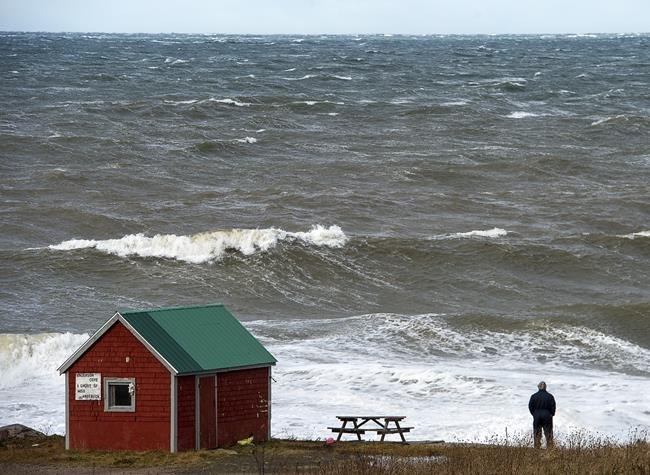HALIFAX — A Canadian firm says the RCMP are declining the free use of its state-of-the-art sonar to search for a fishing boat that sank off Nova Scotia last month, with six crew lost.
The RCMP announced on Dec. 22 they would use their own towed sonar to search the seabed of the Bay of Fundy, but as of Thursday they had not located the scallop dragger.
Karl Kenny, chief executive of Kraken Robotics Ltd., said in an interview Thursday his firm contacted the RCMP three times since the Dec. 15 sinking to offer use of its sonars, and said there has been no response.
The St. John's-based company's technology was recently adopted by the Danish and Polish navies for mine-hunting operations and has been used successfully for numerous underwater searches for missing wrecks and aircraft.
The 60-year-old executive says he's "baffled" why police wouldn't accept the expertise of the Canadian company, adding that he offered to waive the fee because of the tragedy.
Kenny said the synthetic aperture sonar is far higher resolution than more traditional side-scan sonar, and said comparing the two is like comparing a black-and-white television to a colour, high-definition screen.
"In these kind of conditions police need to be soliciting and looking for all the help they can get, especially when it's free," he said.
The torpedo-like unit is towed five-to-25 metres over the seabed and is kept stable underwater with a control system that is "like an airplane underwater flying itself," Dave Shea, the firm's senior engineer, said in an interview Thursday.
Without such stabilization, sonars bounce around as they're towed, leading to images that are difficult to see, Shea explained.
The grieving mother of Aaron Cogswell, one of the lost crew members, has told The Canadian Press she's desperately hoping that such a search might yield the body of her son.
The body of Michael Drake of Fortune, N.L., was found on shore last month. The other men still missing are Leonard Gabriel, Daniel Forbes, Eugene Francis and the boat’s captain, Charles Roberts.
RCMP Sgt. Andrew Joyce said in an interview Thursday the next immediate steps in the search, "would be adequately addressed with current resources." He added, "police continually assess the circumstance and when appropriate, have and will engage external resources."
Joyce said he was unable to say how many days police have used sonar during their search operation, but said rough seas have presented logistical problems for the sonar search team. He said he couldn't provide the name or type of sonar technology the RCMP have access to.
Kenny, however, said the company's sonar system is undergoing maintenance and may no longer be available.
The scallop dragger went down in waters slightly less than five kilometres from the coast of southwest Nova Scotia, in depths of about 61 metres.
Pierre Murray, the Transportation Safety Board's director of marine investigations in Atlantic Canada, said in an interview Wednesday the bay's currents could have moved the boat kilometres from the original sinking site.
It's not uncommon for boats that sink in the Bay of Fundy to never be found, he said. One example is the scallop dragger RLG, Murray said, which sank in September 2010. Four fishermen were lost in that case.
He said the 9.7-metre Lo-Da-Kash, based in Maces Bay, N.B., which sank with three crew members on board in 2004, was only found and raised to the surface because its location was made obvious by an oil slick.
Sunken boats that cannot be located can't be investigated, Kenny said, and as a consequence, he added, important safety lessons are missed and families continue to grieve. He said higher-definition sonar, combined with increasingly sophisticated remote operated vehicles with robotic arms, should be used in marine disasters more often.
Canada's search-and-rescue system should include rapid-deployment centres equipped with these kind of technologies, Kenny, a former naval officer, said.
"The asset could be deployed by the RCMP, the Royal Navy, the coast guard and the solution could be containerized and air shipped to where it's needed," he said.
"It's 2021 and we're using 1970s technology … We're woefully behind the times in searching and recovering capabilities."
This report by The Canadian Press was first published Jan. 7, 2021.
Michael Tutton, The Canadian Press



